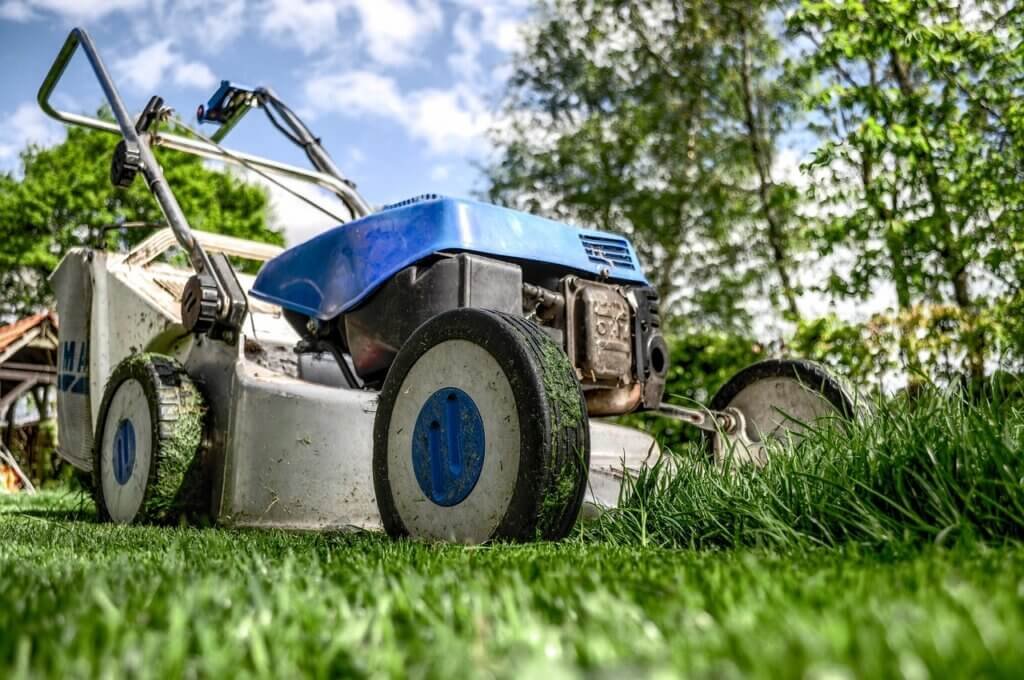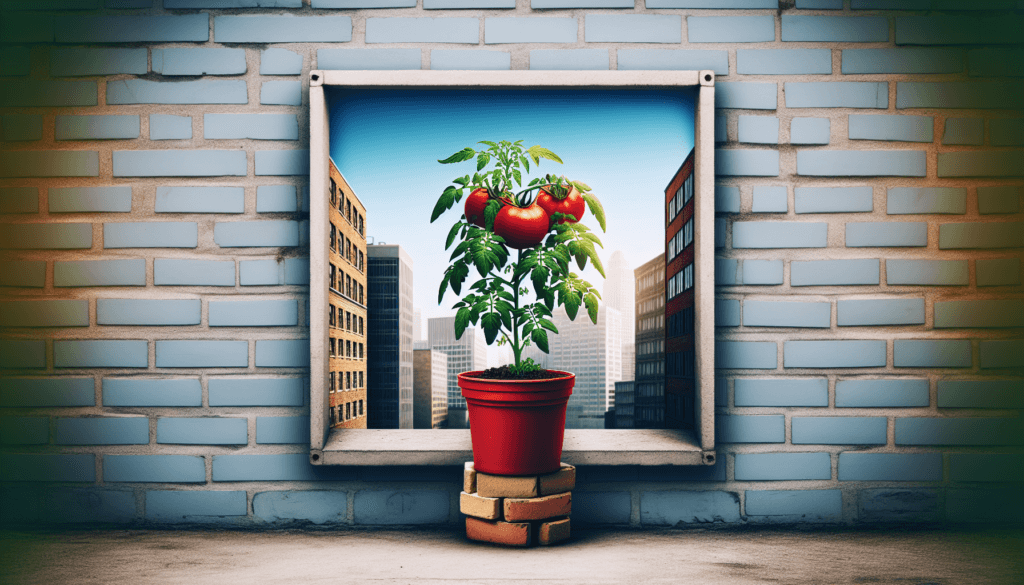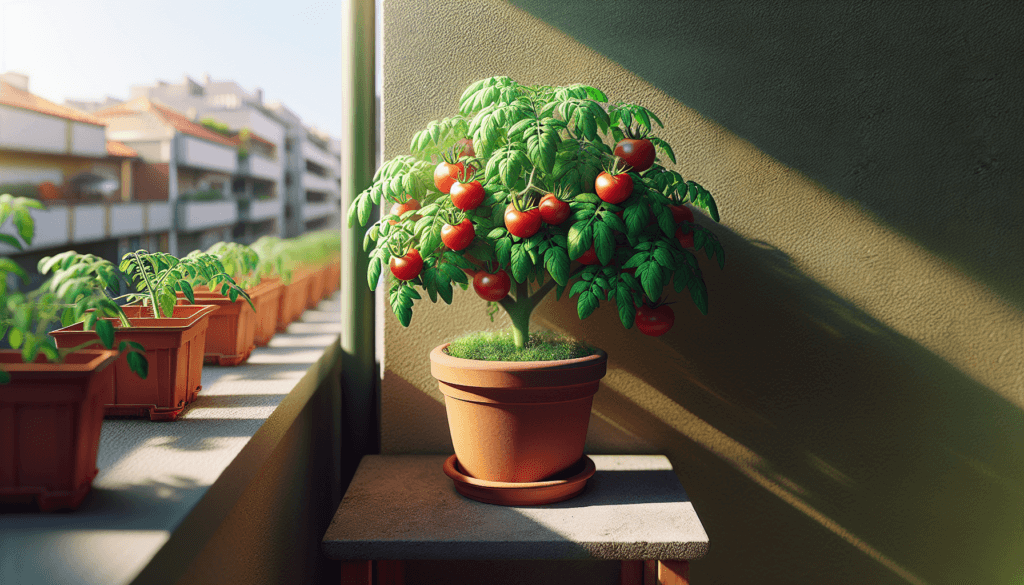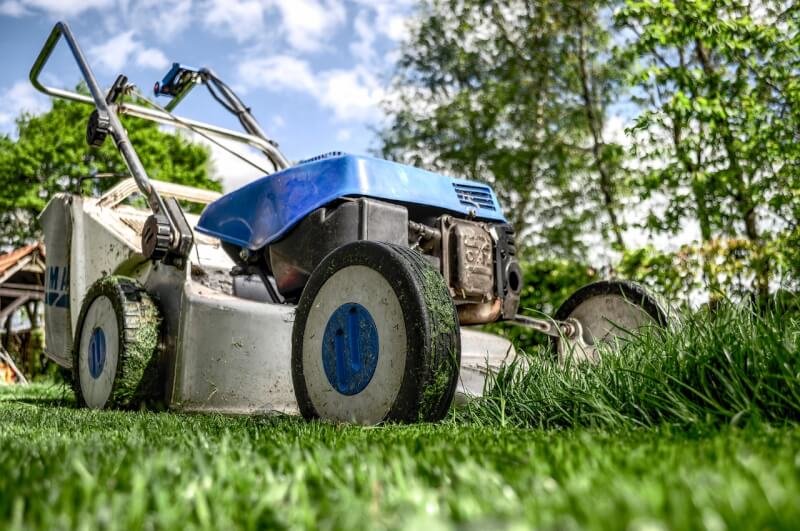Are you tired of tasteless store-bought tomatoes? Look no further! In “The Ultimate Guide To Growing Tomatoes In Small Urban Spaces,” you will discover everything you need to know about cultivating delicious tomatoes right in the comfort of your own small urban space. No more feeling limited by the lack of a backyard garden – this guide will teach you how to maximize your space and create a thriving tomato garden, filled with juicy, homegrown goodness. Whether you live in an apartment or have limited outdoor space, this guide is your ticket to tomato-growing success. Get ready to impress your friends and family with your green thumb and enjoy the satisfaction of harvesting your very own vine-ripened tomatoes.

1. Choosing the Right Tomato Varieties
When growing tomatoes in small urban spaces, it is crucial to choose the right varieties that will thrive in limited space and provide a bountiful harvest. Determining the space and light requirements of the tomato plants is the first step in selecting the right varieties. Some tomato plants require full sun throughout the day, while others can tolerate partial shade.
Considering container options is another important aspect of choosing the right tomato varieties. Since urban spaces often have limited soil availability, growing tomatoes in containers is a popular choice. Depending on the size and type of container, certain tomato varieties may be more suitable than others.
If you have limited space, selecting dwarf or patio varieties can be a game-changer. These compact plants are specifically bred to grow in containers and small spaces. They have a bushy growth habit and produce an abundance of tomatoes, making them ideal for urban gardens.
Exploring cherry tomato options is also worth considering. These small, bite-sized tomatoes are not only delicious but also perfect for growing in containers. Cherry tomatoes come in a wide range of colors and flavors, allowing you to add variety to your urban garden.
2. Preparing the Soil
Once you have chosen the right tomato varieties, it’s time to prepare the soil for optimal growth. Testing the soil pH is an essential step to ensure that it is suitable for tomato plants. Tomatoes prefer a slightly acidic soil with a pH range of 6.0 to 6.8. If the pH is outside this range, you can adjust it by adding amendments.
Amending the soil with compost is another crucial step in preparing the soil for tomatoes. Compost adds organic matter, improves soil structure, and enhances nutrient availability. By incorporating compost into the soil, you’ll create a healthy environment for your tomato plants to grow and thrive.
Adding organic matter is also important for nutrient-rich soil. Organic matter, such as well-rotted manure or compost, provides essential nutrients to the plants and improves soil fertility. It helps retain moisture, promotes microbial activity, and enhances overall plant health.

3. Container Selection and Preparation
Choosing the right container size and type is critical for the success of your tomato plants in small urban spaces. The container should be large enough to accommodate the root system of the tomato plant and allow for proper growth and development. Generally, a container with a minimum size of 5 gallons is recommended for most tomato varieties.
Adequate drainage is crucial to prevent waterlogging, which can lead to root rot and other plant diseases. Ensure that the containers you choose have drainage holes at the bottom to allow excess water to escape. If your chosen containers do not have drainage holes, you can drill them yourself to ensure proper drainage.
To prevent the spread of diseases, it is important to sterilize your containers before planting the tomatoes. This can be done by soaking the containers in a solution of 1 part bleach to 9 parts water for 10-15 minutes. Rinse the containers thoroughly to remove any residue before filling them with soil.
4. Starting Tomato Seeds
To grow tomatoes in small urban spaces, starting the seeds indoors is a common practice. Determining the optimal seed starting time is crucial to ensure that your tomato plants are ready to transplant outdoors at the right time. Tomato seeds should be started indoors 6-8 weeks before the last expected frost date.
Selecting quality tomato seeds is essential for a successful harvest. Look for reputable seed suppliers or consider saving seeds from your favorite heirloom tomatoes. Choose varieties that are well-suited for container gardening and urban environments.
Germinating tomato seeds indoors requires a few key steps. Start by filling seed trays or containers with a high-quality seed starting mix. Plant the seeds about ¼ inch deep and cover them with a thin layer of the starting mix. Keep the soil moist but not overly wet and provide bottom heat to promote germination.
Once the seedlings have developed their first set of true leaves, it is time to transplant them into individual pots. This step allows each seedling to have sufficient space for root development and eliminates competition for nutrients.

5. Transplanting Tomatoes
Timing the transplant of your tomato seedlings is essential for their successful growth in small urban spaces. Transplanting too early can expose them to late spring frosts, while transplanting too late can delay their maturity and reduce overall yield. Aim to transplant your tomato seedlings outdoors when all risk of frost has passed.
Before transplanting, it is important to harden off your seedlings. This process involves gradually acclimating them to outdoor conditions by exposing them to sunlight, wind, and temperature fluctuations over a period of 7-10 days. This helps prevent transplant shock and allows the seedlings to adjust to their new environment.
When transplanting your tomato seedlings, ensure proper techniques for their successful establishment. Dig a hole slightly larger than the root ball and place the seedling in the hole, making sure the soil level matches the soil level of the seedling’s original pot. Gently firm the soil around the roots and water thoroughly to eliminate air pockets.
6. Providing Optimal Growing Conditions
To maximize the growth and productivity of your tomato plants in small urban spaces, it is crucial to provide them with optimal growing conditions. Sufficient sunlight is essential for tomato plants to thrive. Choose a location that receives at least 6-8 hours of direct sunlight per day for best results.
Watering tomatoes properly is important to prevent issues such as blossom end rot and cracking. Tomatoes require consistent moisture, so water them deeply whenever the soil feels dry. Avoid overhead watering to minimize the risk of foliar diseases. Instead, direct the water towards the base of the plants to ensure thorough root hydration.
Providing adequate support for your tomato plants is crucial to prevent sprawling and ensure proper growth. This can be achieved by using stakes, trellises, or cages. Choose a support system that matches the size and growth habit of your tomato varieties and install it early in the growing season to avoid root disturbance.
Pruning tomato plants is an optional technique that can enhance growth and improve airflow, thereby reducing the risk of diseases. By removing suckers, which are the small shoots that develop in the leaf axils, you can direct the plant’s energy towards fruit production. Pruning also helps maintain a manageable size and shape for easier maintenance.

7. Fertilizing and Mulching
Fertilizing your tomato plants is important to provide them with the necessary nutrients for healthy growth and optimal fruit production. Choose a fertilizer that is specifically formulated for tomatoes and follow the package instructions for application rates.
Applying fertilizers correctly is crucial to avoid over-fertilization, which can lead to nutrient imbalances and plant stress. As a general guideline, it is recommended to apply a balanced fertilizer at planting and then side-dress with additional fertilizer every 4-6 weeks throughout the growing season.
Mulching your tomato plants is beneficial for several reasons. It helps retain moisture in the soil, reduces weed competition, and regulates soil temperature. Organic mulches such as straw, shredded leaves, or wood chips can be applied around the base of the plants, leaving a small gap around the stem to prevent rotting.
8. Managing Pests and Diseases
When growing tomatoes in small urban spaces, it is important to be proactive in managing pests and diseases. Identifying common tomato pests is the first step in effective pest management. Some common pests that can affect tomatoes include aphids, tomato hornworms, and whiteflies. Monitor your plants regularly to detect any signs of pest infestation.
Implementing integrated pest management (IPM) practices is an effective and environmentally friendly approach to pest control. This involves a combination of preventive measures, such as companion planting and attracting beneficial insects, as well as targeted treatments using natural or organic pest control products when necessary.
Recognizing tomato diseases is essential for early detection and treatment. Common tomato diseases include blight, powdery mildew, and early or late leaf spot. Be on the lookout for any signs of discoloration, spots, or unusual growth patterns on the leaves or fruit of your tomato plants.
Preventing and treating common diseases can be achieved through various measures. Practice crop rotation to prevent the buildup of disease-causing pathogens, provide adequate airflow by spacing plants properly, and water at the base of the plants to avoid splashing soil onto the leaves. Fungicides and other organic disease control products can be used as a last resort if necessary.

9. Harvesting and Storing Tomatoes
Determining tomato ripeness is an important skill for maximizing flavor and quality. Tomatoes should be fully mature and have reached their optimal color before harvesting. Gently squeeze the tomatoes to check for a slight give, indicating that they are ripe. Additionally, they should have a rich color and develop their characteristic flavor and aroma.
Proper harvesting techniques ensure that the tomatoes are not damaged during the process. Use clean, sharp garden shears or scissors to cut the tomatoes from the vine, leaving a small stem attached. Avoid twisting or pulling the tomatoes, as this can lead to bruising and damage.
To maximize the shelf life and storage of your harvested tomatoes, handle them with care. Remove any damaged or overripe tomatoes from the batch to prevent spoilage. Store the tomatoes at room temperature, away from direct sunlight, and use them within a week for the best flavor and freshness.
10. Troubleshooting Tomato Growing Issues
Dealing with yellowing leaves is a common issue that can be caused by various factors, including nutrient deficiencies, overwatering, or pests. Identifying the underlying cause is key to addressing the problem. Adjusting watering practices, providing the necessary nutrients, and monitoring for pests can help resolve yellowing leaf issues.
Blossom end rot is another common problem that occurs when there is a calcium deficiency in the developing fruit. This condition manifests as dark, sunken spots at the blossom end of the tomato. Ensuring consistent moisture levels, providing adequate calcium through proper fertilization, and maintaining even soil moisture can help prevent blossom end rot.
Tackling pest infestations requires a comprehensive approach. Besides implementing integrated pest management techniques, such as using natural predators or organic pest control methods, you may need to physically remove pests from the plants. Handpicking pests like tomato hornworms or using insecticidal soaps can help control infestations.
Resolving nutritional deficiencies requires proper fertilization and soil amendment. Yellowing or stunted growth may indicate nutrient deficiencies, such as nitrogen, phosphorus, or potassium. Applying a balanced fertilizer or supplementing with specific nutrients can address these issues and promote healthy growth.
In conclusion, growing tomatoes in small urban spaces is both rewarding and achievable with the right knowledge and techniques. By choosing the right tomato varieties, preparing the soil, starting seeds, providing optimal growing conditions, and managing pests and diseases, you can enjoy a bountiful harvest of fresh, flavorful tomatoes, even in limited space. With this comprehensive guide, you are equipped with the information needed to successfully grow tomatoes in your small urban garden.


